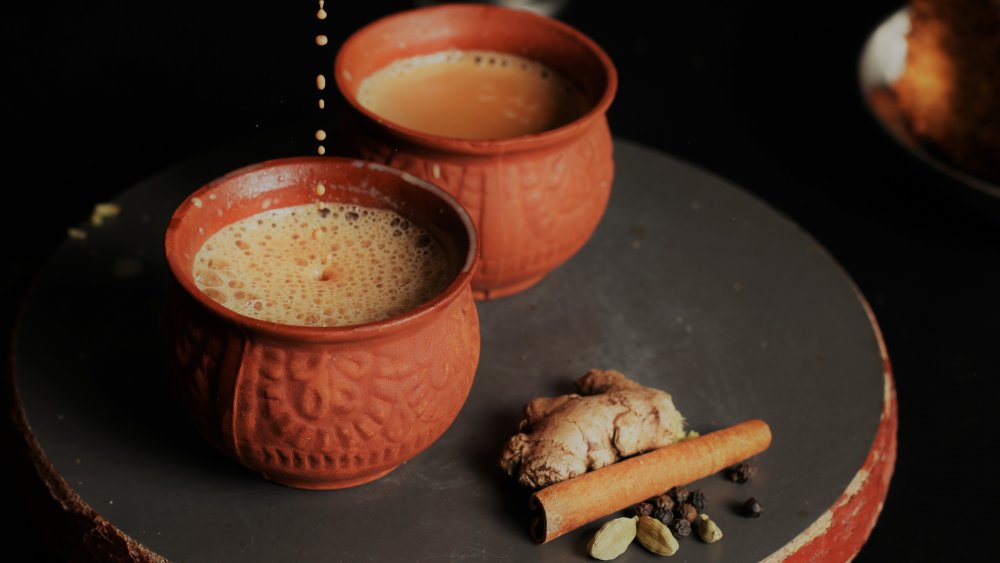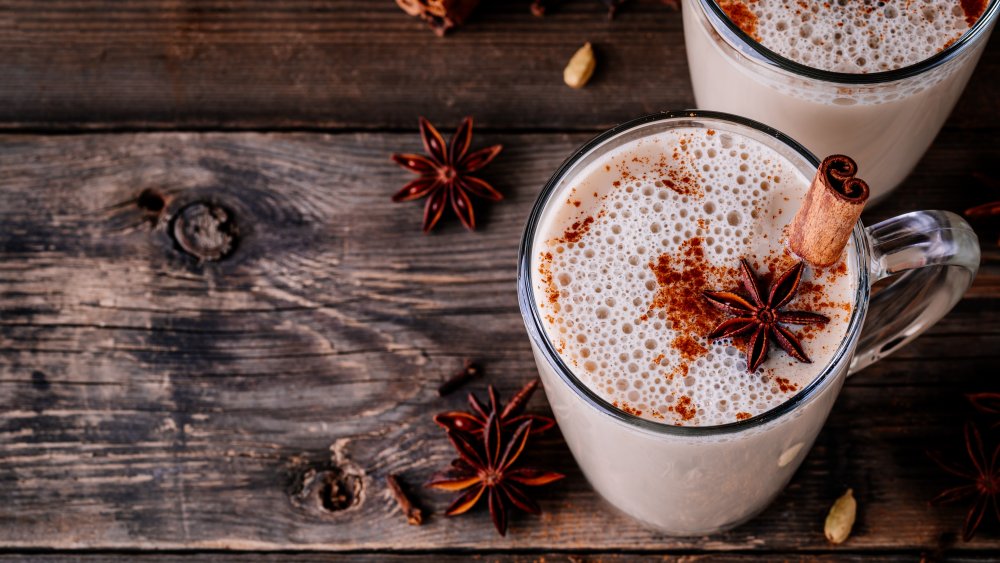The Original Purpose Of Chai Might Surprise You
Like many other drinks that evolve into Starbucks-ified versions of their original forms — caramel macchiatos, matcha lattes, and white chocolate mochas — the origins of chai have largely fallen by the wayside in the U.S. From its origin country, rich with history, chai has mostly gone the way of the others, morphing into a bucket of syrupy American hot-beverage juice. An Indian tradition shaped by British colonization, masala chai was served for medicinal purposes long before it graced the lips of college sophomores cramming for a bio-chem exam.
According to The Spruce Eats and Teatulia, a king created masala chai, which means "spiced tea," over 5,000 years ago in what is now India. It began as a mix of herbs and spices steeped in water for use in Ayurveda, a practice that focuses on holistic healing through diet and balancing of energy (via Healthline). Ginger and black pepper were good for digestion, cloves were pain relieving, cinnamon could stimulate circulation and respiration, cardamom could elevate mood, and so on (via Teatulia).
Chai's evolution from India to a worldwide favorite
Funnily enough, masala chai didn't contain black tea until the British colonized India and promoted tea consumption there in the early 1900s through their Indian Tea Association (via The Spruce Eats). Its popularity grew, but because tea was still expensive, it was used to bolster the spices in chai, along with milk and sugar. Later on in the '60s, masala chai became even more popular with a new kind of mechanized tea production system that made it more affordable. Masala chai made with Assam or Darjeeling teas is popular today in India, and can be found in various versions made with different teas, milks, spices, and sweeteners (via Teatulia and The Spruce Eats).
In America, masala chai has become popularized and has even largely dropped the "masala" or "spiced" from its name, explains The Spruce Eats. Known simply as "chai," an Americanized version might be sweetened with sugar or syrup, be made with non-dairy milk, or, as is common in many coffee shops, come in a pre-sweetened liquid concentrate before adding steamed milk. Starbucks' concentrate, for example, contains a mixture of the traditional herbs, is sweetened with sugar and honey, and adds in vanilla, citric acid and "natural flavors." There you have it: a short, sweet (and spicy) history of chai.

